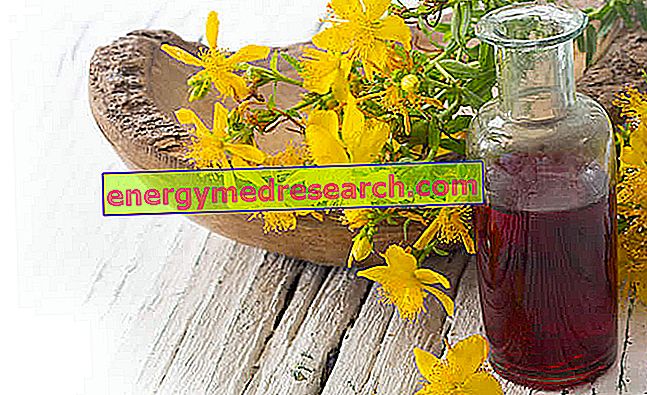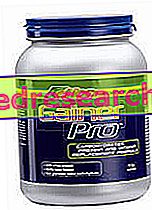As early as the sixteenth century it was known that scurvy was prevented and cured by administering extracts of pine, vegetable or lemon needles, but only in 1912 did Funk hypothesize the presence in water plants of a water-soluble substance with antiscorbutic action, in 1921 this substance it was isolated and called vitamin C.

Ascorbic acid is the enolic form of 3-keto-L-gulofuranolactone.
Vitamin C is synthesized by plants and many animals (amphibians, reptiles, some birds and mammals) from glucose.
Among the Mammals, only humans, other primates and guinea pigs are unable to synthesize it due to L-gulono-g-lactone oxidase deficiency
Vitamin C in brief Absorption and transport Storage and elimination Vitamin-rich foods Vitamin C loss during food preparation Vitamin C functions Vitamin C antioxidant additive natural or synthetic vitamin C? Ascorbic acid - Vitamin C: how much and in what form Carenzaeccesso Vitamina C in cosmetics against skin aging Megadoses of vitamin CVitamin C and tumors- Vitamin C and coldSynthesis of vitamin C
Absorption and transport
Vitamin C is absorbed in the proximal part of the small intestine by facilitated transport Na + dependent, absorption decreases in old age, in cases of achlorhydria and intestinal infections.
The degree of absorption for dietary doses is high 70 ÷ 90%, but declines for doses higher than 1 g; aspirin inhibits absorption.
Vitamin C is transported in plasma from albumin in the form of ascorbic acid, which enters cells as dehydroascorbic acid (insulin promotes passage and glucose inhibits it).
Once inside the dehydroascorbic acid is reduced to ascorbic acid which concentrates mainly in the cytoplasm where it acts as an antioxidant.
Deposit and elimination
Unlike other vitamins, vitamin C is accumulated in the human body, especially in the liver and adrenal glands, which explains why deficiency symptoms appear only after 4 months.
The pool of vitamin C in the human body is about 1.5 ÷ 5 g.
The catabolism of dehydroascorbic acid occurs by hydrolysis of the ring with formation of 2, 3-dicheto-L-gulonico acid, which can be decarboxylated to CO2 and compounds with 5 carbon atoms (xylose, acyl xylone) or oxidized to acid oxalic and compounds with 4 carbon atoms (treonic acid).
Ascorbic acid is mainly eliminated in the urine; it is reabsorbed, in part, in the renal tubules for active transport Na + dependent, which together with the intestinal absorption represents a mechanism of homeostatic regulation.
Vitamin C functions in the body
Vitamin C is necessary for numerous hydroxylation processes catalyzed by some oxygenases.
Vitamin C performs important functions such as:
- collagen biosynthesis: where it intervenes in the conversion of proline into hydroxyproline and lysine into hydroxylisine by proline hydroxylase and lysine hydroxylase which require Fe ++ (vitamin C keeps the iron in reduced form);
- the synthesis of noradrenaline (neurotransmitter) starting from dopamine e, in all likelihood tryptophan in serotonin;
- the synthesis of carnitine, essential for the transfer of acyls (fatty acids) into the mitochondria;
- The catabolism of tyrosine to fumaric and acetacetic acids through the formation of homogentisinic acid;
- the amidation of the carboxy-terminal end of hormonal peptides such as vasopressin, oxytocin, cholecystokinin, adrenocorticotropic hormone (ACTH) and thyrotropin-releasing hormone;
- the biosynthesis of bile acids, in fact in the guinea-pigs subjected to a diet lacking in vitamin the synthesis is reduced; vitamin C seems to stimulate the cytochrome P450 reductase, responsible for the hydroxylation in 7-a position of cholesterol, necessary for the synthesis of cholic acid;
- activation of folic acid in tetrahydrofolic acid (FH4), a biologically active form;
- the regulation of the endogenous levels of histamine, inhibiting their release and favoring their degradation (vitamin C is used for therapeutic purposes to prevent anaphylactic shock, pre-eclampsia and prematurity in pregnancy complications);
- the biosynthesis of steroid hormones in the adrenal cortex (by hydroxylation); in fact, when the hormonal need increases in the cortex there is a depletion of both cholesterol and vitamin C;
- the intestinal absorption of iron (reducing ferric Fe to ferrous and favoring the formation of stable chelates capable of maintaining soluble Fe in an alkaline environment), its transfer from plasma transferrin to tissue fereritin and increased intracellular availability favoring the bond ferro-ferritin and increasing the stability of the complex itself;
- the reduction of the efficiency of intestinal copper absorption, since the oxidized form is more absorbed than the reduced one (at high doses of vitamin);
- reduce the toxicity of some minerals (Ni, Pb, V, Cd, Se), which in reduced form are more difficultly absorbed or excreted more quickly;
- to favor the use of selenium at physiological doses, increasing the bioavailability of some of its organic and inorganic forms;
- a preventive action in nitrosamine carcinogenesis, inhibiting their synthesis, which occurs at the intestinal level, by the reaction of nitrites with the amino groups;
- the reduction of superoxide ions, hydroxyl radicals, hypochlorous acid and other powerful oxidants, protecting the DNA structure of proteins and membranes from the damage that these oxidants could cause;
- the constitution, together with vitamin E, of a system of protection against oxidative damage caused by free radicals: PUFAs are protected by tocopherols, which after irradiation form phenoxyl radicals, tocotrienoxyls, to then be regenerated at the expense of vitamin C which forms an ascorbyl radical;
- the immune function, in fact it has been observed experimentally that vitamin C is able to:
- stimulate the production of interferons, which protect cells from viral attacks,
stimulate neutrophil proliferation,
- protect proteins from inactivation by free radicals produced during the oxidative processes that occur in neutrophils,
- stimulate the synthesis of the humoral thymic factor and the antibodies of the IgG and IgM classes.
- stimulate the production of interferons, which protect cells from viral attacks,



